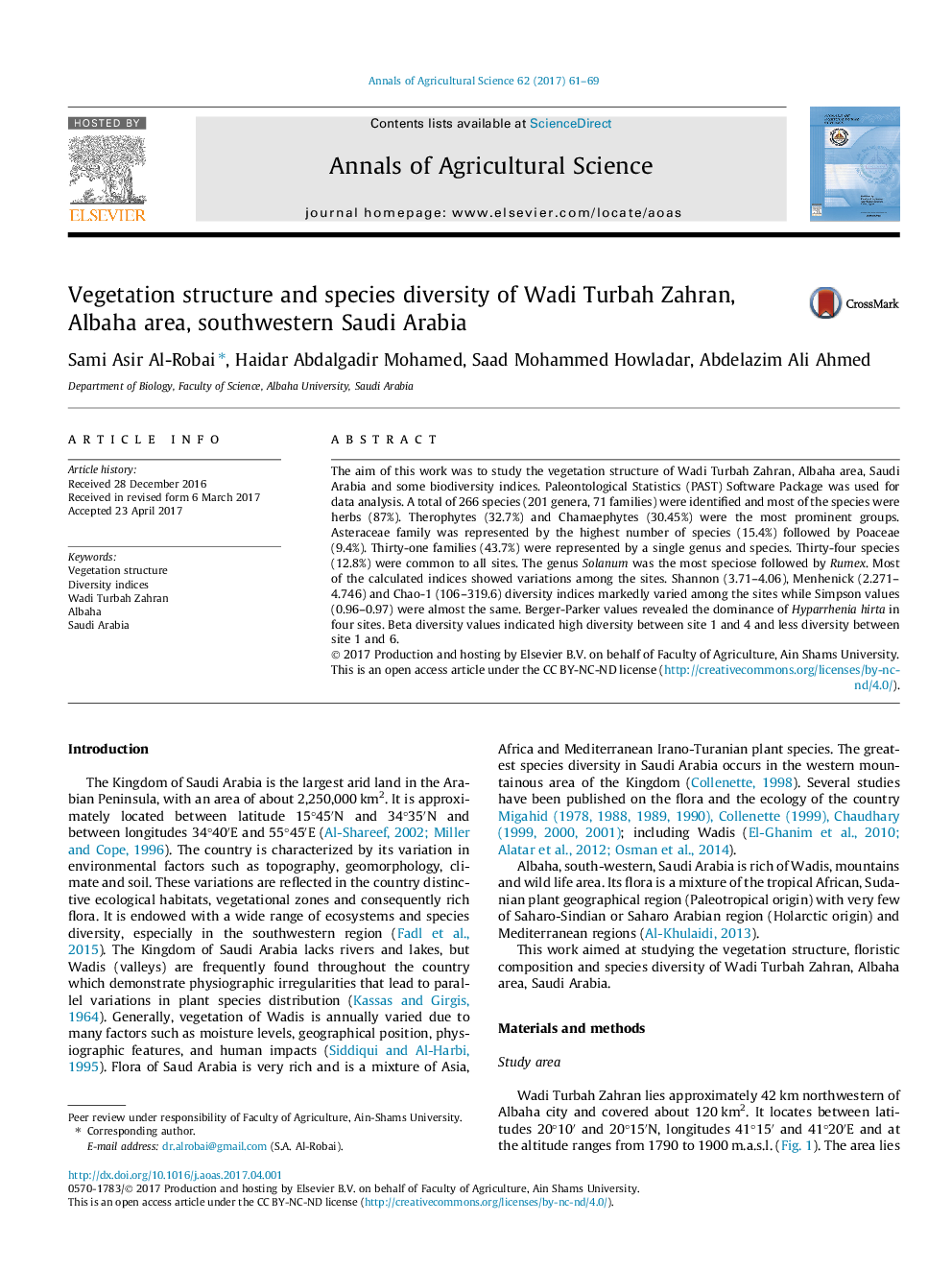| Article ID | Journal | Published Year | Pages | File Type |
|---|---|---|---|---|
| 8875165 | Annals of Agricultural Sciences | 2017 | 9 Pages |
Abstract
The aim of this work was to study the vegetation structure of Wadi Turbah Zahran, Albaha area, Saudi Arabia and some biodiversity indices. Paleontological Statistics (PAST) Software Package was used for data analysis. A total of 266 species (201 genera, 71 families) were identified and most of the species were herbs (87%). Therophytes (32.7%) and Chamaephytes (30.45%) were the most prominent groups. Asteraceae family was represented by the highest number of species (15.4%) followed by Poaceae (9.4%). Thirty-one families (43.7%) were represented by a single genus and species. Thirty-four species (12.8%) were common to all sites. The genus Solanum was the most speciose followed by Rumex. Most of the calculated indices showed variations among the sites. Shannon (3.71-4.06), Menhenick (2.271-4.746) and Chao-1 (106-319.6) diversity indices markedly varied among the sites while Simpson values (0.96-0.97) were almost the same. Berger-Parker values revealed the dominance of Hyparrhenia hirta in four sites. Beta diversity values indicated high diversity between site 1 and 4 and less diversity between site 1 and 6.
Related Topics
Life Sciences
Agricultural and Biological Sciences
Agricultural and Biological Sciences (General)
Authors
Sami Asir Al-Robai, Haidar Abdalgadir Mohamed, Saad Mohammed Howladar, Abdelazim Ali Ahmed,
